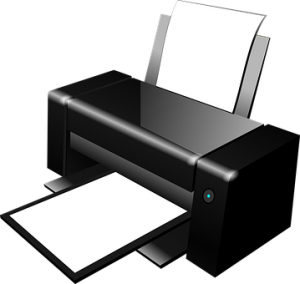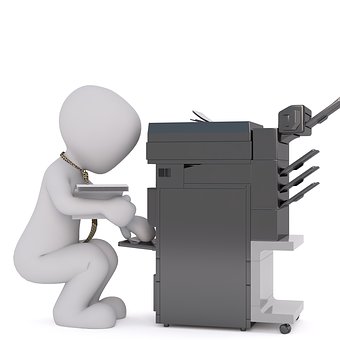Printer Printing Blank Pages
Sometimes, you’ve just hit print button with the expectation that your important document will emerge from your trusty printer, but instead, you’re greeted with a blank sheet of paper. Frustrating, right? It’s a scenario that has tested the patience of many, whether you’re at home, in the office, or in a bustling library. The seemingly innocuous problem of a printer keeps printing blank pages can quickly disrupt your workflow and lead to a cascade of questions. In this blog, we will delve into common printing problems and equip you with a toolkit of troubleshooting steps to get your printer back on track. We’ll navigate the intricacies of ink and toner, explore software and hardware considerations, and provide expert guidance to ensure that your printer once again transforms blank pages into beautifully printed documents. So, let’s roll up our sleeves and embark on the journey to tackle printer printing blank pages issue.
Why Printer Keeps Printing Blank Pages?
When a printer keeps printing blank pages instead of the expected content, it can be a perplexing and frustrating issue. Several factors can contribute to these common printing problems, ranging from simple and easily fixable issues to more complex technical problems. Here are some common reasons why your printer only printing blank pages.
- Empty or Depleted Ink/Toner Cartridges: One of the most common causes of printer keeps printing blank pages is running out of ink or toner. When the cartridges are empty or nearly empty, the printer won’t be able to produce any visible content.
- Improperly Installed Cartridges: If the ink or toner cartridges are not correctly installed, they may not make proper contact with the printhead, leading to printer printing blank pages but has ink.
- Clogged Printhead: Over time, the printhead can become clogged with dried ink or toner residue, preventing it from dispensing ink or toner onto the paper, resulting in printer printing blank pages but has ink.
- Wrong Paper Type or Size: Using the incorrect paper type or size settings in the printer’s configuration can lead to blank pages. The printer may not be depositing ink or toner on the paper as expected.
- Software or Driver Issues: Corrupted printer drivers or software conflicts can disrupt the printing process, resulting in blank pages. It’s essential to ensure you have the correct and up-to-date printer drivers installed.
- Empty Color Cartridge for Color Printing: In color printers, if one of the color cartridges is empty or low on ink, it can cause blank pages, especially when printing in color.
- Printhead Alignment Problems: Misaligned printheads can prevent proper ink or toner distribution, resulting in printer only printing blank pages issue.
- Printer Maintenance Required: Printers, especially inkjet printers, require regular maintenance to keep them functioning correctly. Neglecting maintenance tasks, such as cleaning or printhead alignment, can lead to printer printing blank pages.

- Ink or Toner Leakage: In some cases, a leak in the ink or toner cartridge can prevent the printer from properly applying ink or toner to the paper, resulting in blank pages.
- Faulty Hardware: Internal hardware problems, such as a malfunctioning printhead or damaged printer components, can cause blank pages. These issues may require professional repair.
- Paper Jam: Even a small paper jam can disrupt the printing process and lead to blank pages if the paper cannot move through the printer properly.
- Low Print Resolution: Setting the printer to a very low print resolution can result in faint or barely visible prints, causing printer connected but not printing.
- Ink/Toner Saving Mode: Some printers have an ink-saving or toner-saving mode, which can make prints appear lighter or fainter. If this mode is enabled, it might give the impression of blank pages.
Troubleshooting the issue of a printer printing blank pages typically involves checking the ink or toner levels, inspecting cartridge installation, cleaning the printhead, adjusting paper settings, and verifying printer software and driver configurations. If simple fixes do not resolve the problem, more advanced troubleshooting or professional assistance may be necessary to identify and rectify the underlying issue.
How To Fix Printer Printing Blank Pages Issue:
Fixing printer keeps printing blank pages can be a frustrating experience, but it’s often solvable with some troubleshooting steps. Here’s a step-by-step guide to help you address this issue:
- Check Ink/Toner Levels: IF your printer connected but not printing, verify that your ink or toner cartridges have sufficient ink or toner. Replace or refill them if they are empty or low.
- Inspect Cartridge Installation: To fix printer printing blank pages issue, ensure that the ink or toner cartridges are correctly installed and securely seated in their respective slots. Make sure you’ve removed any protective seals or tape.
- Clean Printheads: If you have an inkjet printer, use the printer’s built-in cleaning utility to clean the printheads. Refer to your printer’s manual for instructions on how to do this.
- Check Paper Settings: Check that the paper type and size parameters in your printer’s configuration are accurate. Using the wrong settings can result in blank pages.
- Update and Reinstall drivers: If your printer keeps printing blank pages, ensure that you have the correct and up-to-date printer drivers installed on your computer. The most recent drivers are available for download from the printer manufacturer’s website.
- Verify the Print Queue: Check the print queue on your computer for any pending print jobs. Sometimes, jobs get stuck in the queue, causing subsequent prints to be blank.

- Disable Toner Saving Mode: If you have a laser printer, check if it’s set to a toner-saving mode. Disabling this mode may improve print quality.
- Run a Printer Self-Test: Many printers have a self-test or diagnostic mode that can help identify hardware issues. Refer to your printer’s manual for instructions on how to run this test.
- Align Printheads (Inkjet Printers): Inkjet printers often have a printhead alignment process. Running this alignment can improve print quality. Consult your printer’s manual for guidance.
- Use Genuine Cartridges: Using third-party or refilled ink or toner cartridges can sometimes lead to printing issues. Consider using genuine cartridges recommended by the printer manufacturer.
- Check for Firmware Updates: Check the printer manufacturer’s website to check if any firmware upgrades for your printer are available. Updating firmware can resolve compatibility issues.
- Perform a Factory Reset (Advanced Step): As a final resort, you can restore your printer’s default settings by performing a factory reset. Be aware that this will erase any custom configurations.
Remember to consult your printer’s manual for specific instructions and guidance, as different printer models may have unique troubleshooting steps. Additionally, be patient and methodical in your troubleshooting efforts, as it may take some time to identify and resolve the underlying problem causing your printer to print blank pages.
Conclusion:
In conclusion, resolving the problem of a printer producing blank pages can be a frustrating ordeal, but armed with the right knowledge and troubleshooting techniques, you can tackle this issue with confidence. We’ve explored a range of potential causes, from depleted ink cartridges to software conflicts, and we’ve outlined step-by-step solutions to help you get your printer back to its productive self.
Remember to begin with the basics: check ink or toner levels, inspect cartridge installation, and ensure your paper settings are correct. If these steps don’t yield results, move on to more advanced troubleshooting, such as cleaning printheads, updating drivers, and running diagnostic tests. To know more about our support services, you can navigate to the website’s Homepage.

